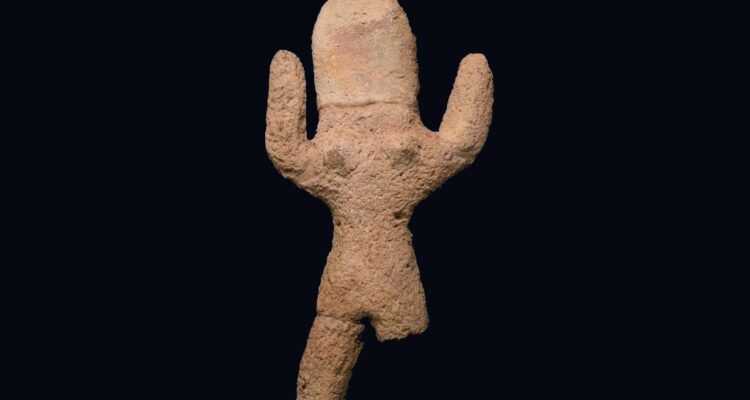Relics used in magical rituals discovered on pilgrimage road in southern Israel.
By Pesach Benson, TPS
Archaeologists discovered magical artifacts in the southern Israel that shed surprising new light on the practices of Muslim pilgrims traveling between Egypt and Mecca around 400 years ago, the Israeli Antiquities Authority announced on Monday.
These relics, thought to have been used in popular magical rituals, were uncovered along the ancient Darb al-Hajj route in the Eilat Mountains of southern Israel in the late 1990s by Moti Shemtov, a resident of Eilat.
This led to a comprehensive archaeological investigation whose findings were recently published in the peer-reviewed Journal of Material Cultures in the Muslim World.
The collection of items found includes dozens of fragments of clay globular rattles, resembling table tennis balls which contained small stones that produced sound when shaken.
Additionally, two artifacts resembling miniature votive incense altars, a small figurine of a naked woman or goddess with raised hands, a few other figurines, and colored quartz pebbles were discovered.
Researchers Dr. Itamar Taxel of the Israel Antiquities Authority, Dr. Uzi Avner of the Dead Sea-Arava Science Center, and Dr. Nitzan Amitai-Preiss of the Hebrew University of Jerusalem concluded that these artifacts were employed in magical rituals carried out in order to ward off the evil eye, to heal diseases and more.
“This discovery reveals that people in the Early Ottoman Period—just as today—consulted popular sorcerers, alongside the formal belief in the official religion,” Taxel, Avner and Amitai-Preiss said.
An analysis of the ceramic artifacts indicated that they originated from Egypt.
According to the Antiquities Authority this marks the first time such a substantial assembly of ritual objects of this nature has been found, especially at a temporary site rather than a permanent settlement.
The artifacts were unearthed near the Pilgrimage Road, or Darb al-Hajj in Arabic.
This route began in Cairo, crossed the Sinai Peninsula, continued through the Eilat region, and eventually reached the town of Aqaba before continuing into the Arabian Peninsula. This route had been in use from the early days of Islam, starting in the 7th century CE, and remained in use until the 19th century CE.
A network of wells, rest areas, and oases was developed along the route to support pilgrimage and trade traffic. Many of these historic rest stops and wells can still be found along the Darb al-Hajj route.
In the vicinity of the Eilat Mountains, several camping sites and structures for pilgrims have been discovered.
It appears that these structures primarily served during the Mamluk and Ottoman periods, beginning in the 13th or 14th centuries CE.
Taxel noted that many of the artifacts were discovered in a broken state, suggesting they may have been intentionally damaged during ceremonies.
It appears that these rituals were conducted on-site by one or more individuals specializing in popular magical practices.
Literary sources indicate that magical rituals were in high demand across various strata of society, even alongside formal religious observances, and it is likely that pilgrims en route to Mecca and Medina sought such services.
Dr. Omry Barzilai, Southern Regional Archaeologist of the Israel Antiquities Authority, noted that the “Darb el-Haj” road intersects the municipal boundaries of Eilat, positioning the city to become part of a unique regional archaeological and tourist area.
The Israel Antiquities Authority said it plans to oversee the road’s development and accessibility while organizing educational activities to emphasize its cultural heritage role.





